Szarlotka na kruchym
Szarlotka: Polish Apple Pie
How to pronounce it?
shar-LOT-kah
‘Play’ to hear:
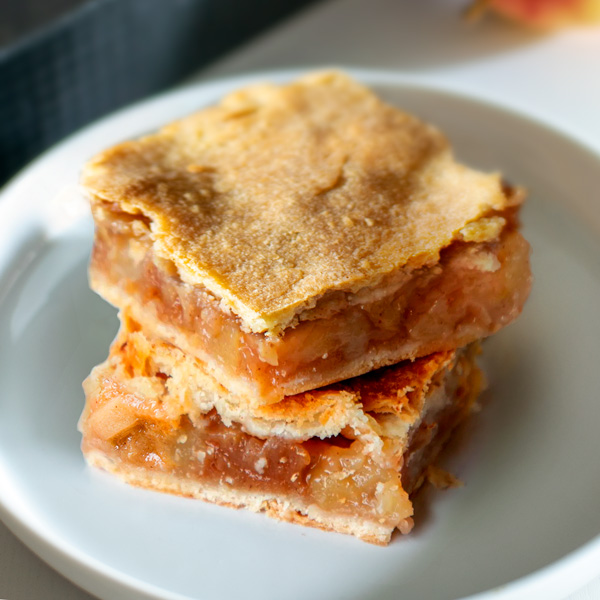
Today we’re going to bake a classic. Just a proper, traditional Polish apple pie, making the very best of what autumn has to offer. No crazy twists, no modern interpretations. Let’s start with the basics.
Szarlotka is a Polish apple pie (not a cake! More on that later), the nation’s favourite. Perhaps only a cheesecake could compete – and that’s a big “maybe”.
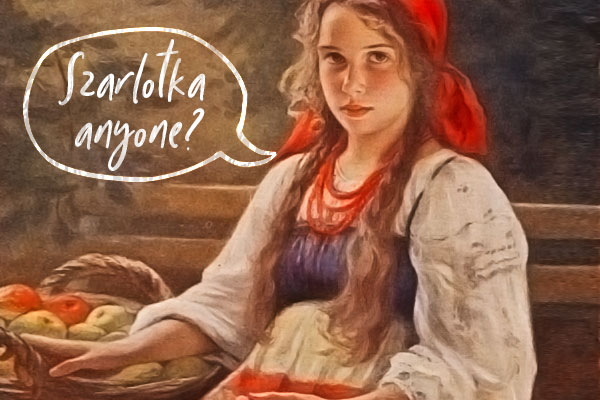
It’s based on a buttery shortcrust, filled with spiced shredded apple, optional custard or meringue and topped with crumble or an additional layer of pastry. Baked until golden, it’s served warm or cold with a dash of whipped cream or some vanilla ice cream. No need to wait for a special occasion – szarlotka is an everyday dessert, served at homes and also available at most bakers, confectioners and restaurants.
Fun fact: Szarlotka shares its name with a popular cocktail (Żubrówka vodka mixed with apple juice), so you’ll see it in the menu not only as a dessert.
“Golden Polish Autumn” (pol. Złota Polska Jesień) – we use this phrase to describe this moment when leaves turn rusty yellow and carmine red. That’s when the apple harvest begins. And while each autumn seems to be greyer than the previous one (or maybe I’m just getting older and colour-blind), the rich colours of the seasonal fruit stay the same. It’s worth preserving these little beauties in jars, to capture them at their prime.
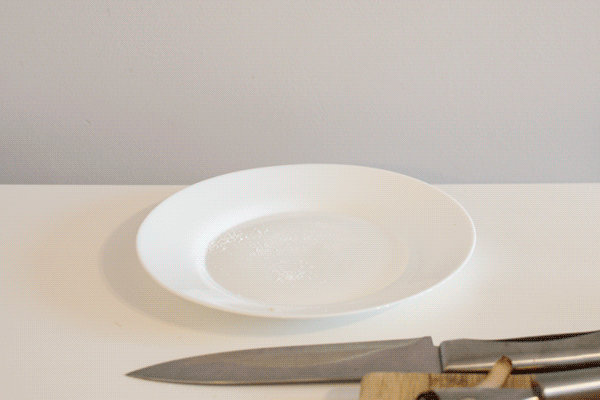
Best Apples for Szarlotka
- In Poland: Gray & Gold Reneta (Rennets, Reinette), Antonówka (Antonovka), Champion, Lobo or Cortland – I hear that these types make the best szarlotka that one can dream of.
- In the US, try Golden Delicious, Honeycrisp, Braeburn, Mutsu/Crispin, Winesap or Pink Lady (kudos to Chris from Bon Appetit for these suggestions)
- UK: Cortland, Braeburn, Pink Lady, Egremont Russet. Excellent advice at The Telegraph here.
If in doubt, ask your grocer for a tart or semi-sweet variety that holds its shape when cooked.
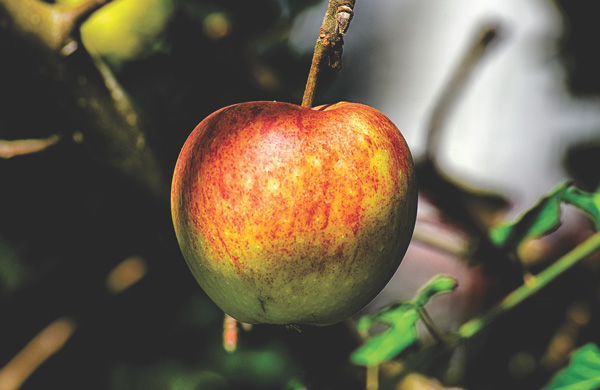
Polish Apple Pie (Szarlotka) vs Apple Cake (Jabłecznik)
In short, szarlotka is a shortcrust or semi-shortcrust pastry filled with apples. Back in the day, pears, apricots or peaches were used as well.
Jabłecznik cake, unlike szarlotka, can be prepared using any kind of base, for instance, puff pastry, sponge or yeast-based cake.
While this sounds pretty straightforward, many people mistake szarlotka for jabłecznik and vice versa. Heck, I wasn’t quite sure what the difference is myself! Luckily, both are delicious and worth a try. But if you’re after a particular one, make sure to double-check the recipe or when buying – ask in a store/restaurant.
Apple Pie Story
Being my nerdy self, I wanted to know how szarlotka came to be. All the sources I found point to the same story:
At the beginning of the 19th century, renowned French confectioner Marie-Antoine Carême created something special. Commissioned by Tsar Alexander I, he prepared a speciality named charlotte russe. Its name wasn’t picked randomly. The dessert was baked in honour of the Tsar’s sister-in-law, who was known as Charlotte of Prussia.
This origins story sounds plausible at first, as the Polish lands were heavily influenced by both the East and West. But here’s where I see a problem – the work of a French confectioner resembled more of a fruit cake with biscuits and cream. Modern szarlotka, which we know and love, doesn’t seem to have much in common with the alleged predecessor.
Perhaps we just “borrowed” the name, and then changed everything in the recipe beyond recognition?
As you can imagine, there are as many interpretations of szarlotka as there are bakers:
- with nuts (or without)
- with dried fruit (or without)
- with meringue or custard
- with crumble on top or with just a flat layer of shortcrust
- apples are grated or sliced
And on top of it all, there are many regional varieties as well!
But for this post, let’s keep it simple. Let’s go back to a classic Polish-style apple pie, without any modern or regional twists. You know, the kind that’s recognizable & loved universally by everyone.
I found this recipe in “Doskonałe wypieki domowe” cookbook (“Excellent home baking”) by Juliusz Zdanowicz. Simply named “Polish Apple Pie”, it caught my eye – the ingredients were straightforward, with proper creamy butter and without any unnecessary baking powder.
And here it is!
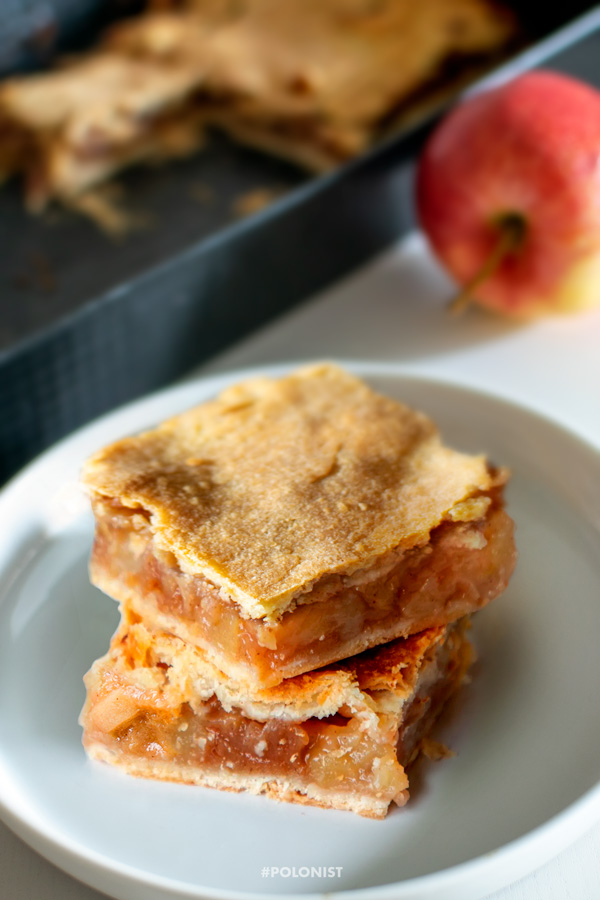
Classic Szarlotka: Polish Apple Pie

Making szarlotka from scratch is so much easier than you might think, especially with this time-tested recipe. This classic homemade pie features a sweet apple filling packed inside a delicious buttery shortcrust.
Ingredients
- 3⅓ cups (400g) plain flour
- ⅔ cup (85g) confectioners (Icing) sugar
- 2 sticks (250g) butter - 1 “brick” in Poland
- 3 eggs
- 1 tbsp vanilla sugar (can be replaced with vanilla extract)
- 3.3 lb (1.5 kg) apples
- 1 cup (200g) sugar (or less, depending how sweet your apples are)
- 1 tbsp cinnamon
- A pinch of confectioners (Icing) sugar to sprinkle on top (optional)
Instructions
- For my szarlotka I used a deep rectangular baking tray (18x27 cm / 7x10 inch), but any shape will do just fine.
- Take out the butter for half an hour in advance to let it soften.
- Knead together all the ingredients (flour, icing sugar, butter, eggs, vanilla sugar), form a smooth mass, wrap into cling film and place in the fridge.
- Wash the apples, peel them and then grate or cube them. I’ve done the latter.
- Move the apple pieces to a pot. Cover in sugar and start cooking until soft. Add cinnamon mid-way through.
- Grease the baking tray and/or line it with baking paper. Roll out half of the dough and place in the tray. Pierce with a fork.
- Heat the oven to 170°C (340°F), bake the shortcrust base for 5-10 minutes until it starts to gain some colour.
- Remove from the oven. Spread apples on top. Roll the remaining dough and use it on top to cover the apples. Bake for 1 hour in 140-160°C (280-320°F).
- Serve cooled or warm with some whipped cream or vanilla ice-cream, with some icing sugar sprinkled on top.
Notes
Troubleshooting and Q&A
🤔 Do I Really Need To Cook The Apples For Szarlotka?
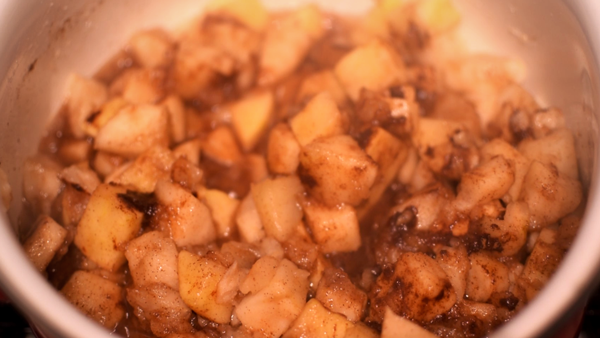
Yes. Cooking the apples along with sugar and a touch of cinnamon adds a deep, rich caramelized flavour. And, more importantly, the heat releases apple’s liquid, causing them to cook down and lose volume. That way our pie ain’t watery and has a sturdier structure.
But that doesn’t mean you have to cook apples every time from scratch. Simply cook a lot of them in one go – and then preserve them in jars. That way they’re always ready when you are.
You could try using a store-bought canned apples, but that way you can’t control the quality and who knows how much excess sugar and additives are packed in there (sorry, I’m distrustful when it comes to these sort of products)
🤔 Why Is My Apple Pie So Watery? And How Can I Make The Filling Thicker?
I’m not a fan of thickeners, so I won’t advise you to use one. Perhaps you’ve picked an extra juicy kind of apple? Or do these apples need a tad more cooking time?
Also, consider letting the pie “sit” for a bit before cutting into it. That way the filling has a chance to set.
🤔 My Szarlotka is So Mushy! Why?
So what? The mushy filling is tasty too.
But seriously – I see two potential reasons. One: perhaps your apple pieces are too thin. Two: you’ve picked the wrong type of apple. Sweeter varieties tend to break down easier than acidic ones. If you like more texture to your szarlotka and less gloopy applesauce-like sludge, opt for semi-sweet or tart apples which hold their shape. I’ve listed some recommendations above.
Polonist is reader-supported. When you buy through links on our site, we may earn a small affiliate commission. Learn more
Recipe Information
Filed under:
Alternative traditional/regional names:
Ciasto z Jabłkami, Jabczanik
Also known / Misspelt internationally as:
Polish Apple Pie, Sharlotka
Tested by:
First published on:
Recipe by / Adapted from:
“Doskonałe wypieki domowe” cookbook (“Excellent home baking”) by Juliusz Zdanowicz. ISBN: 83-207-1709-4
Story by:
Bibliography / References: